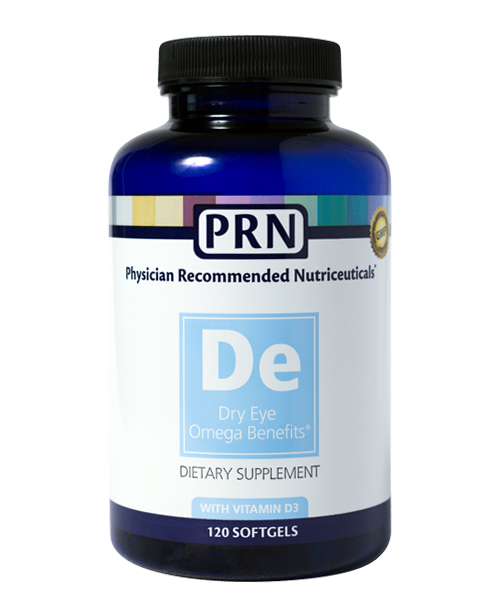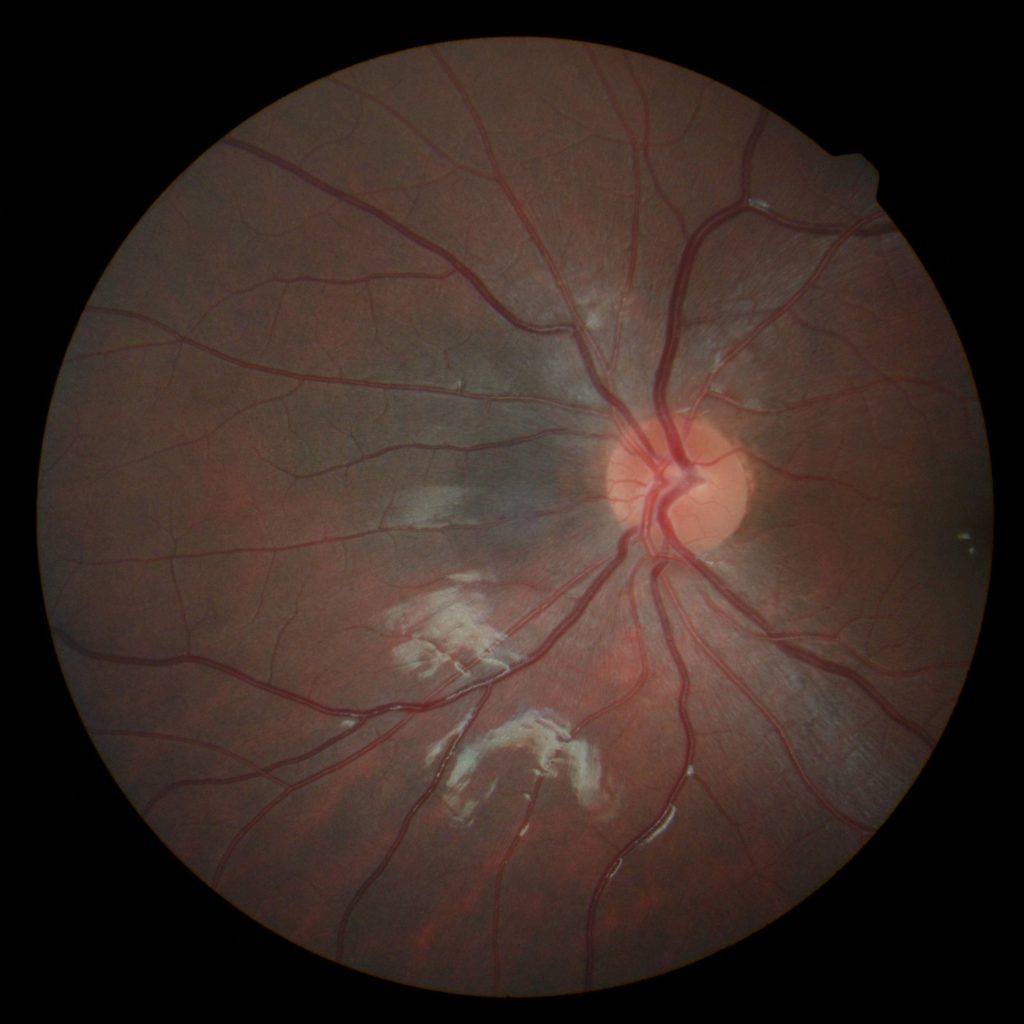It’s been 3 months now taking PRN’s fish oil. I believe honesty is the best policy with my patients. Thus I will not state that the results have been earth shattering, but it has been very positive. I do feel about a 30% improvement in terms of my dry eyes, which is mostly from staring at the computer all day. However, I will say that my recent blood work at my annual physical has been much improved without really changing my diet or exercise routine (lack of exercise really). My eczema has also seen improvements. Although my initial reason for taking these supplements was improving my dry eyes, I’m quite happy that other things have improved also. Given the results, I will continue with these supplements as I have seen no negative results from being on PRN DE3 fish oil only positive ones.

Recently we had the opportunity to meet with PRN (Physician Recommended Nutraceutical), a company that produces the highest grade and the most “absorbable” fish oil. Now many of you may wonder, what’s the difference between PRN and say Costco fish oil, which is what wondered also. It turns out that the manufacturing and the final product is quite different. Judy from PRN, told us that 99% of fish oil that you buy is sold as the ethyl ester form. So what does that mean? Without going into too much detail, the ethyl ester form, the body first processes it though the liver by stripping out the ethanol and then converts the fatty acids back into a triglyceride form. This conversion is said to have some side effects such as digestion problems, fishy burps (yuck), rash, body odor, etc. The version that PRN sells is already in the triglyceride form and requires no conversion and is easily absorbed by the body. The relative downside to PRN’s fish oil is the cost of producing this purified product. However, given the alternative, it seems very much worth it.
Possible benefits of Omega 3 – DHA and EPA
- Reduced risk of hypertension and coronary heart disease
- Improvement of eczema
- Improved blood glucose control
How does this pertain to the eye?
PRN’s engineered its fish oil to target those with dry eyes. Although many studies have shown the benefits of omega-3 for dry eyes, there are also a number of studies that disproves the benefits of omega-3 for dry eye, most notably the recent DREAM study. Unfortunately, nowadays it seems that data can be manipulated to prove almost anything. All studies need to be met with a keen eye examining how the studies were set up, the number of data points, etc. Being a person with mild dry eyes, I wanted to see if it would work for me and how long it would take for results. Starting today we, the doctors and staff, will begin a trial with PRN fish oil. We will report back in 3 months. Best thing about this company is that they have a 90 day satisfaction guarantee, but you have to take the supplements for 90 days before you ask for money back.

Ocular melanoma in the US is about 6 persons per million according to Cancer Journal published in 2005. In comparison, melanoma of the skin is about 153.5 per million. Not only do ocular melanomas cause damage to the eyes and potential blindness, they are responsible for deaths of a significant proportion of affected patients. Dilated eye examinations are needed to detect choroidal nevi, while undilated examinations are not as useful due to the limited field of view. These detections for choroidal nevi are important because of the severity of the consequences.
“Choroidal nevi are quite frequent in white individuals, with an estimated prevalence between 5% and 8%, but they are estimated to show low rate of malignant transformation, only 1 in 8845 [11]. However, giant choroidal nevi (10 mm or more in diameter) were estimated to transform into melanoma in 18% over 10 years.” – Int J Clin Exp Pathol. 2013; 6(7): 1230–1244.
The importance of dilated eye exams cannot be understated. It is still the gold standard for evaluating the ocular health of the retina and other structures. Those patients that do have choroidal nevi or “freckles” in the retina, it is imperative that regular dilated exams are done to check for stability in appearance. Even though the transformation potential is low, the ramifications can be, in this case, lethal.
It’s been a while since new glaucoma medications have been introduced. Recently the FDA approved two new glaucoma medications designed to reduce intraocular pressure through different mechanisms. These new drops are Rhopressa (by Aerie Pharmaceutical) and Vyzulta (by Bausch and Lomb). However, at this time, the non-insurance cost can be prohibitive at around 300-400 dollars per bottle per month. In time, these prices will come down and insurance companies will cover these medications. If your insurance covers these glaucoma medications, they should be the ones to be on.
Does Hubble = Trouble for Contact Lens Companies?
Hubble contact lenses are part of the new trend of direct-to-consumer businesses. Its business model is very much like that of Warby Parker’s or Zenni Optical’s in eye care. Is Hubble cheaper in price compared to others? Well it sure seems so, but is cheaper always better? For some people it is, but for many, I think it’s all about the cost to quality ratio.
Now many of you may be thinking, well this post is just an optometrist being sour about not being able to make a contact lens sale. While this may be true for some eye care practices, it does not apply to our practice because we only want to fit the best contact lenses, not the cheapest.
Comparison Shopping
Let’s look at the comparison here. Contact lenses are often judged by how much oxygen is able to transmit to the eye. The higher the DK number, the better. Here are a few examples
High End 1-Day Lenses:
Alcon Dailies Total One: 140 DK
Acuvue Oasys 1 Day: 103 DK
Mid Level 1-Day Lenses that are popular:
Acuvue 1-Day Moist: 28 DK
Biotrue Dailes: 42 DK
Hubble contact lens: 18 DK
Conclusion
Hubble contact lens DK value of 18 is one of the lowest out there, but then again, it is one of the cheapest in price. It is, however, not some state-of-the-art lens material like they claim. In fact, the material they use has been out for a long time and IS definitely passed its prime. So do yourself a favor, as great as their advertising is about $1 a day for contact lenses, don’t compromise your eye health to save maybe up to a dollar per day, if not just a few cents. Hubble contact lenses really aren’t that cheap. For example, $2 dollars a day you can get the high end lenses such as Dailies Total One if you wanted to, and for even less, you could get BioTrue, Acuvue 1-day Moist, or any other brand name lenses. The difference is so small, that you could easily make that up by ordering a small instead of a med/large coffee the next time you’re at your favorite coffee shop :-). Just a thought.
Many people are excited about the possibility of not wearing glasses after laser corrective surgery. However, one thing that is often over looked is the impact of smoking after a procedure called photorefractive keratectomy (PRK) or LASIK. Smoking can affected the healing process of the cornea, especially in PRK where no flap is created. In PRK, the top layer must essentially regenerate itself complete. This is healing process is much longer than LASIK. With that said, research has shown that people who continue to smoke during the recovery period are at higher risk for corneal haze in both procedures. Corneal haze could lead to decreased vision or an sub-optimal outcome. In general, we recommend that every should stop smoking, not just for the eyes but for the body. If quitting isn’t an option, then at minimum stop a few weeks before the procedure and wait until the cornea completely heals to help obtain the best possible surgical outcome.
People with keratoconus have a new treatment option. The U.S. Food and Drug Administration (FDA) has approved corneal collagen cross-linking (CXL) for progressive thinning and distortion of the cornea.
The treatment uses a special laser and eye drops to promote “cross-linking,” or strengthening, of collagen fibers in the cornea.
CXL has been in wide use outside the United States for about a decade. Based on three year-long studies, the FDA approved the new treatment for keratoconus and other types of corneal ectasia. Corneal ectasia is the general name for conditions in which the cornea gets thinner and changes shape.
The cornea is the clear front window of the eye where light enters. It helps you see by focusing the light.
We’re working on acquiring frames at this time. Let us know what frames you’re most interested in and we’ll try to make it happen. We like supporting independent companies that foster the idea of quality and superior design, but don’t worry we’ll also include those brands that you’re most familiar with too. Stay tuned and visit our “Brands” page.

Recent Comments